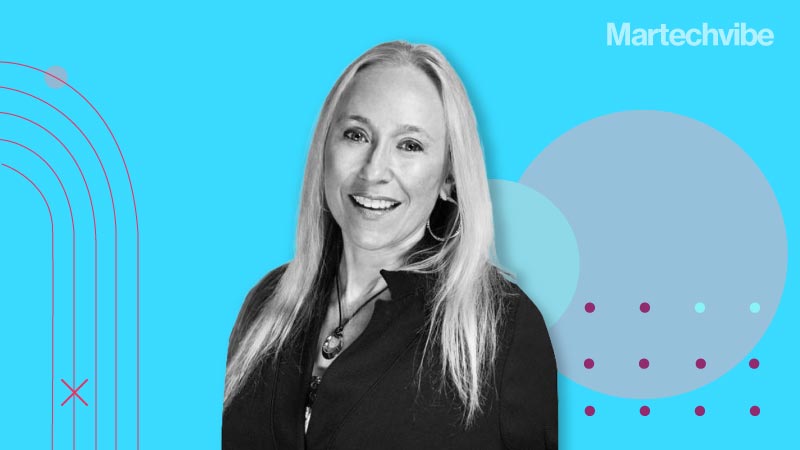CX Champions Add Credibility to the Transformation Effort
“Here’s what I believe is an uncomfortable — yet indisputable — truth: You are in business to create and nurture your customers. Without customers — and especially without employees to create your products and to serve your customers — you have no business,” says Annette Franz, founder and CEO of CX Journey Inc. A firm […]
Topics

“Here’s what I believe is an uncomfortable — yet indisputable — truth: You are in business to create and nurture your customers. Without customers — and especially without employees to create your products and to serve your customers — you have no business,” says Annette Franz, founder and CEO of CX Journey Inc.
A firm believer in putting the customer first, Franz, a CCXP, and the founder and CEO of CX Journey Inc., a customer experience consultancy, is the author of Built to Win: Designing a Customer-Centric Culture That Drives Value for Your Business.
We spoke to Franz about what leaders must focus on when building winning customer-centric cultures.
Excerpts from the interview;
By now, most companies realise the significance of moving from the aged brand-centric model to the futuristic customer-centric culture. But many fail in doing so. What’s the main difference, and where should companies start?
There are certainly many differences between companies that are brand-centric and those that are customer-centric. Those that are brand-centric focus on a couple of things, which can best be summed up as getting the message about the brand out to customers with no regard for what customers care about or want to hear. These are also the brands that care about maximising shareholder returns, not about benefits for the customer. Customer-centric companies put the customer and her best interests at the heart of all they do. I like to say, no discussions, decisions, or designs without bringing in the customer’s voice, without asking: how will this impact the customer? How will it make her feel? What value does it add or deliver for her? What job does it help her achieve?
Where to start? Get the culture set, which requires defining the core values and the associated behaviours and ensuring those values are socialised and operationalised. You’ve also got to make sure executives are committed and aligned to deliberately designing and maintaining a customer-centric culture.
Buyer journeys have become more convoluted. What are some of the common things marketers do wrong when designing journey maps, and what can they do to make it seamless?
There are a lot of mistakes that folks make when creating journey maps. First and foremost, if you’re not capturing what the customer is doing, thinking, and feeling, you’re not journey mapping. If you’re calling a lifecycle map with some touchpoints on it a journey map, you’re not journey mapping. If you do not involve customers and customer data, you’re not journey mapping. If you’re not mapping from the customer perspective, you’re not journey mapping (but are probably process mapping). If you’re not starting with a customer persona, you’re probably not doing journey mapping right.
In your book Built to Win: Designing a Customer-Centric Culture That Drives Value for Your Business, what are the key takeaways for a marketer facing transitionary challenges?
There are a couple of key takeaways.
- In order to be a customer-centric organisation, culture is the foundation. Culture is deliberately designed to be as such, with CEO and executive commitment and alignment across the board.
- Similarly, being customer-centric is organisation-wide, not an individual effort. It’s also not an email, a department, or an individual. It’s everybody, and it’s everything the organisation does.
- A customer-centric organisation is collaborative in nature.
- And a customer-centric organisation places the customer at the centre of everything the business is, and does – its philosophy, business model, operations, strategy, and ideas.
How can organisations find CX champions in-house? What should leaders be looking for?
CX Champions are important to ensure the organisation has that grassroots groundswell needed to transform successfully. They are an essential part of your governance structure.
Here’s what they should look for. CX Champions are employees who are well-respected, and are often recognised as role models when it comes to customer service and customer experience. They are team players, work well with others, and have – or can build – strong cross-functional relationships. They are excellent communicators. They are influential in their departments and, perhaps, across the organisation; they know people, the right people.
CX Champions are leaders (not necessarily with a title), and add credibility to the transformation effort. They might or might not be managers, but they certainly have deep knowledge of their functional areas, and how they mesh with other areas of the business, and they can hold others accountable for the work that needs to be done. They may have experience successfully executing change initiatives. And they are flexible and willing to learn.
In an earlier post, you mentioned that customers don’t want to be in control, while most CX professionals emphasise the opposite. Why is that?
It’s actually not CX professionals who emphasise the opposite; it’s typically marketers and executives because they don’t get it. It seems there’s this resounding “battle cry” that customers are in control because they are more informed than ever. That’s simply not true. Yes, customers have more information at their fingertips than ever, but if you look at their frustrations and their expectations, they aren’t looking to be in control. As a matter of fact, that’s counter to what they are looking for. They want to provide feedback; they want you to use what you know about them (data) so that you understand them better, so that you design and deliver the experience they expect.
If you liked reading this, you might like our other stories
Explained: Customer Earned Growth Rate
Enriching Customer Experience Through User Research






